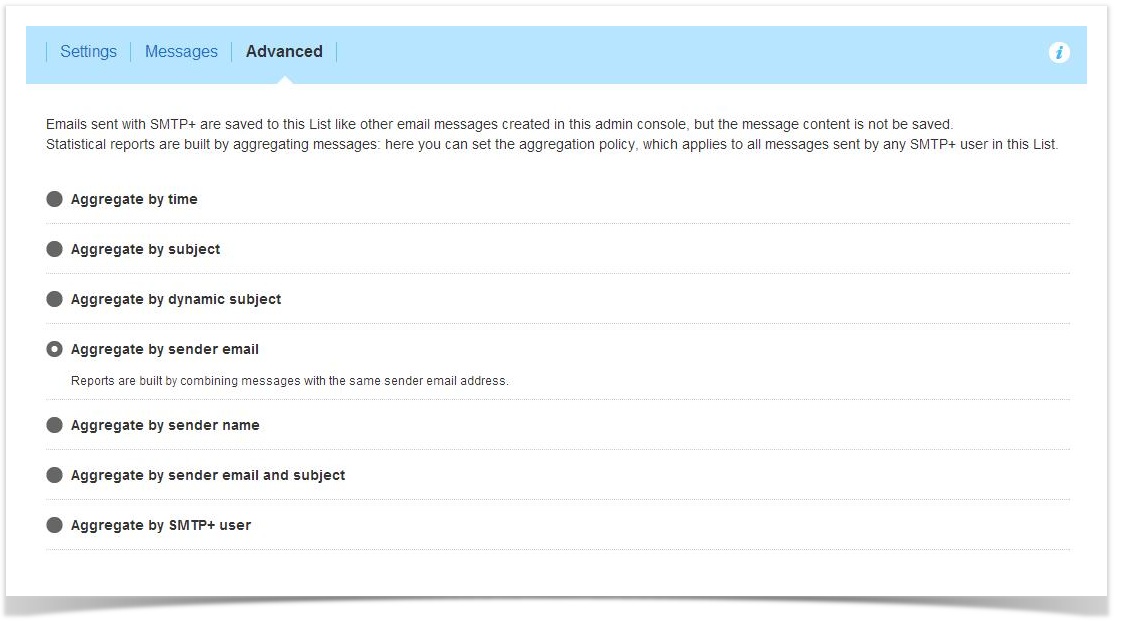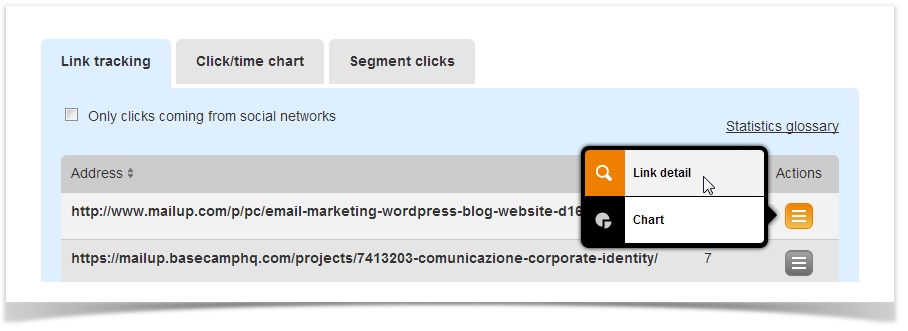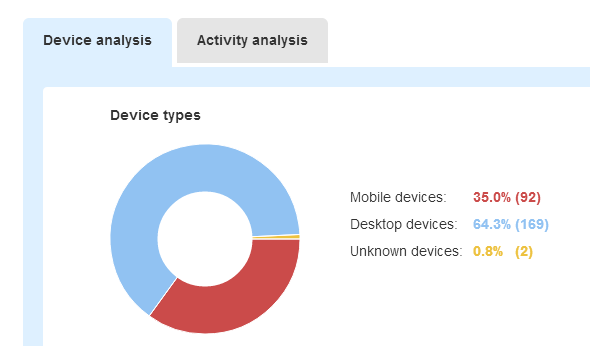SMTP Message Statistics Aggregation
Aggregation policy
Statistical reports for SMTP+ are built by aggregating messages. In this page you can set the aggregation policy, which applies to all the messages sent by the user in the specified list.
Types of aggregation
Messages can be aggregated...
- By time: statistical data will be created aggregating the messages sent in the specified timeframe: day, week, month or year
- By subject: reports will be built combining messages with the same subject
- By dynamic subject: reports will be built combining messages with the same subject, filtered in its dynamic parts (e.g. "Ticket [ ticket number ] solved")
- By sender email: reports will be built combining messages with the same sender email address
- By sender name: reports will be built combining messages with the same sender name
- By sender email and subject: reports will be built combining messages with the same sender email address and subject
- By SMTP+ user: reports will be built combining messages sent by the same SMTP+ user.
- By custom campaign code: we are BETA-testing a new version of SMTP+ that allows data aggregation based on a custom code passed in the message header. Learn more.
Recommended aggregation method
Different aggregation methods will lead to a different amount of individual messages listed by MailUp in the list(s) used for SMTP+.
- Aggregating by subject will likely lead to the highest amount of messages listed in your MailUp account. We recommend not using this aggregation method unless a limited number of messages are sent through SMTP+.
- Aggregating by dynamic subject can be a good idea whenever many messages with similar subjects are sent. For example, an ecommerce store will send many "Order Confirmation" messages for which only the order number might change. Aggregating by dynamic subject will allow you to aggregate all of those messages and have an idea of the overall open and click rates on all order confirmations sent by the store.
- Aggregating by SMTP+ user or sender can help when you are looking for statistcs that are independent of the message that is being sent, and rather focus on who is sending them. Using SMTP+ user as the aggregation method allows you to combine messages sent by different senders that use the same user.
Recipient-level statistics and aggregation method
One of the advantages of using MailUp's SMTP service is that you gain access to recipient-level statistics. Please note that different statistics are available depending on the aggregation method used.
Open statistics
Details on when a specific message was opened is only avaiable when messages are aggregated by subject, and only for the first message sent with a certain subject. When a second message is sent with the same subject, the two statistics are aggregated.
Click statistics
Details on clicks are always available, regardless of the aggregation method. In the message statistics, click on Clicks from the Actions menu. For each link shown, click on Link Details (as seen in the screenshot below) to view details on who clicked on that link.
Device statistics
The device report is always available, regardless of the aggregation policy, and can be extremely useful in determining the importance of sending mobile-ready messages. For example, here is a report from our of our internal SMTP+ account, indicating that 35% of the messages read them on mobile devices.
Related articles
- SMTP+ overview
- Set the properties for the messages sent using the SMTP+ feature
- Configuring SMTP+, server and users
- Set and customize the notifications sent by the SMTP+ feature to your users
- View the send status of SMTP+ messages
- Using SMTP relay from your application


